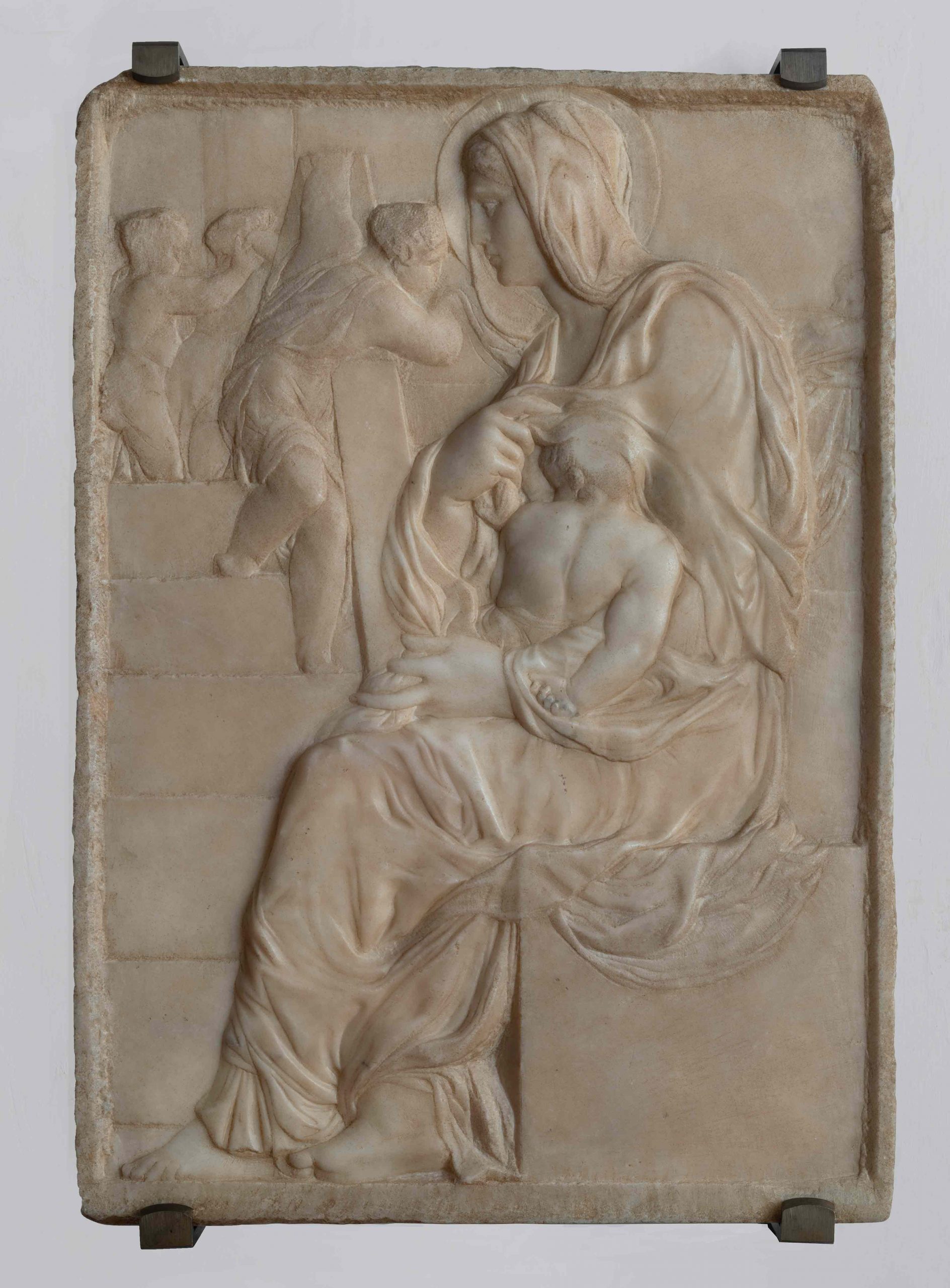
Michelangelo Buonarroti
Madonna della scala
1490 circa
marble, 56,7 x 40,1 cm
Casa Buonarroti, inv. 190
The Madonna della scala, or Madonna of the Stairs, of which no mention was made during Michelangelo’s lifetime, was cited for the first time in the Giunti edition (1568) of Giorgio Vasari’s Lives, where it is stated that the work had been donated “not many years ago” by Leonardo Buonarroti to Duke Cosimo I, “who regards it as unique.”
Before this donation, it is very likely that the work had remained in the artist’s house on Via Ghibellina, and this was where it returned in 1616, when Grand Duke Cosimo II gave it back to Michelangelo the Younger as a mark of recognition for the work of glorification of his great forefather that he was carrying out in the monumental rooms on the piano nobile in those very years.
During recent restoration work, a considerable amount of chiselling came to light on the back of the marble tablet, which can perhaps be explained as the removal of an inventory number: that is, the elimination of a Medici seal of ownership – seen as inconvenient upon the work’s return within the Buonarroti family fold.
Vasari noted the link between the Madonna della scala and the work of Donatello, stating that it “was executed… after the style of Donatello, and he acquitted himself so well that it seems to be by Donatello himself, save that it possesses more grace and design.” And yet, even in this early work, Michelangelo’s relationship with Donatello appears extremely personal and intense, and undoubtedly represents a break: a fascinated reexamination, but at the same time a challenge and a dismissal.
In spite of its limited size, the work has a monumental air, with the female figure occupying the whole height of the relief, from the top to the bottom. The significance of both the stairs from which the relief takes its name and the children, two of them dancing and the other two apparently stretching a piece of cloth behind the Madonna, remains ambiguous, interpreted as a pall. This latter hypothesis shouldn’t be disregarded; indeed, this adolescent work showcases a mother distant in attitude and expression from the Child at her breast, her absent gaze prophesying future misfortunes as it reveals an idea of motherhood too painful to allow her to achieve a loving relationship with her child. Culminating in the sublime yet mysterious Madonna of the New Sacristy, this idea long accompanied Michelangelo’s artistic meditation.
The date of the relief, which has traditionally been considered, from Vasari onward, a work from Michelangelo’s adolescence, has been and still is much disputed: however, the consensus appears to hover somewhere around 1490, and therefore before the Battle of the Centaurs.
Thanks to the generous support of the Friends of Florence Foundation, it has been possible to carry out the restoration of the Madonna of the Stairs, conducted by Daniela Manna (2021-2022).
